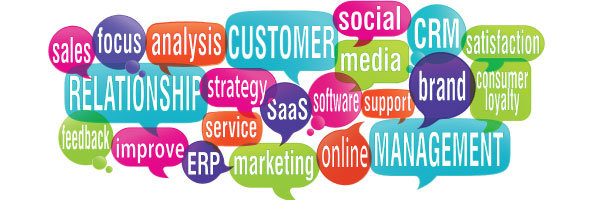Your CRM should be seen as a strong asset which helps your organization to improve businesses processes. In addition, a strong CRM drives revenue, retention and engages customers and employee’s alike.
When implementing a CRM, many pitfalls and mistakes appear and it becomes clearer that it would be best to engage with experienced consultants. However, this indeed is no guarantee that errors and pitfalls are not happening at all.
Common pitfalls associated with the implementation of CRM software systems usually depend to some extent on your own user-stories and what you are looking to achieve. Short, pitfalls are the result of misunderstanding, wrong or not clear expectations and unclear strategies.
Some would say, if your expectations for your CRM software don’t extend much further than managing your contacts, setting reminders to call a client or customer; to set tasks manually, then these can be easily achieved with ‘out of the box’ by most CRM systems providers. Good thing is there isn’t too much that can go wrong. But the other side of this; limited objectives means limited pay-back.
CRM Solutions can make a significant difference when your organization starts managing a large range of processes associated with automation and even further, may be using AI. In fact, a CRM aligns businesses processes with strategies to build loyalty, increase retention and profits over time.
Some studies (Gartner Group) have shown, that about 55% of all CRM projects don’t produce results. So why do CRM implementations fail? Research suggests that CRM backfires clearly because most organizations including executives simply don’t understand what they are implementing, leave alone the associated cost or time-frame.
Many organizations stumble into at least one or more pitfalls while they are trying to implement a CRM system. Each of these are a consequence of a single flawed assumption – that CRM systems will manage customer relationship for you. As mentioned earlier, it is not. CRM system support the bundled business strategy and its associated processes for the purpose of improving loyalty, efficiency and eventually improve the businesses profitability.
To understand the pitfalls of a bad CRM implementation, we need to look at the common mistakes organizations experienced.
- Implementing a CRM strategy and associated tools before creating a customer strategy:
New tools can be seductive and the marketing promises most CRM system vendors have, make you believe that by just implementing a new management tool, all problems disappear and your revenue will increase in no time. They often promise to make a perennial problem go away also. Many CRM systems do that indeed, but only after, and lets repeat this – only after – a traditional customer acquisition and retention strategy has been deployed and tested.
Why? An effective customer relationship is based on segmentation analysis. It is designed to achieve specific goals set in stone in your CX or marketing strategy. Think about this:
Would you build a house without engineering measures or an architect?
Often businesses mistake CRM solutions for a marketing strategy. Many executives try to retrofit a customer strategy to match the CRM system they’ve just purchased. To make things even worse, then they delegate CRM to the wrong stakeholders in their organization. Technology that has touch-points with your customers or that affects customers and a business-outcome must always be aligned with an overarching strategy that works.
2) Deploy a CRM before changing your organization to match:
Implementing CRM systems before creating a customer focused culture and business is indeed the most dangerous and common pitfall. To become more customer centric, your organization needs to first revamp all business processes that relate to customers or that have a touch-point within the customer journey. Just a strategy is simply not enough. A CRM rollout will only be successful after your business and its processes, performance measures and even job-descriptions and compensation systems, have been restructured in order to better meet your customer’s needs. In this journey, you should not underestimate existing departmental and geographical aspects also. If you believe that CRM and its tools affects only customer facing processes, than your are painting your house without sanding the walls first.
When ask what went wrong with the CRM implementation, about 4% of managers cited software problems, just 1% mention they received bad advice but an astonishing 87% pinned the failure on the lack of adequate change management!
3) The myth that more technology is better:
Many businesses assume that CRM is and has to be technology intensive. In fact, it doesn’t. CRM can be managed in many ways and solely depend on your strategy and business processes. Often CRM related objectives can be easily achieved without a huge investment in technology, simply by changing your processes and motivating employees and yourself; the manager or executive; to be more aware of your clients needs.
Merely relying on a technical solution or assuming that a high tech system is better than a low-tech one, is a costly myth and wrong.
At last, despite that there are many more to mention, Stalking and not wowing customers:
One of the mistakes many business make is also, once a CRM system and strategy has been deployed; they often don’t use it. CRM systems usually ship an extensive tool-set for dashboards and reports. Not utilizing the data and information you have gathered and simply just wondering why client A or B is not engaging more often, is what I call stalking.
If you want it to work and show progress, you would have to read reports and monitor your performance measures and compare them with your segmentation. Rapid improvement with rapid deployment is the key. Know your customer and act on changes immediately. Learning from failure and embrace a failure acceptance culture with a customer centric thinking from the c-suite down is the key for a successful CRM and CRM-system implementation and your organizations will benefit from all this overall by avoiding the most common pitfalls and finally increases profitability and retention over time. On the good side is also, that this change management driven aspect will also foster your relationship to your staff and reduces churn in return also.




